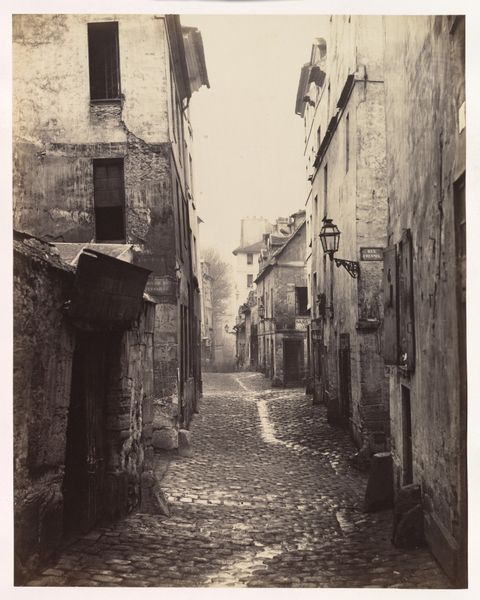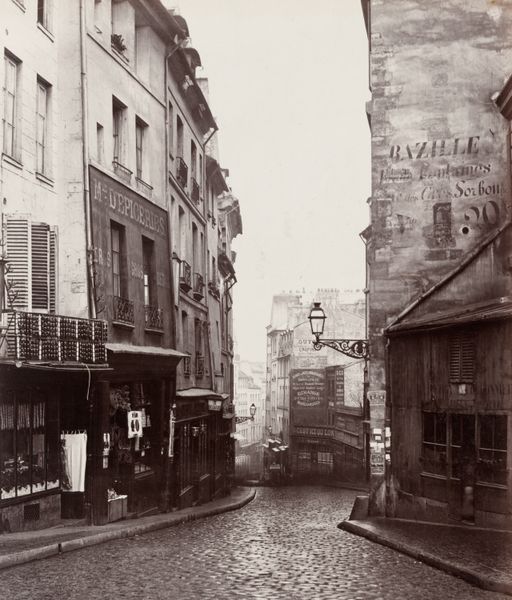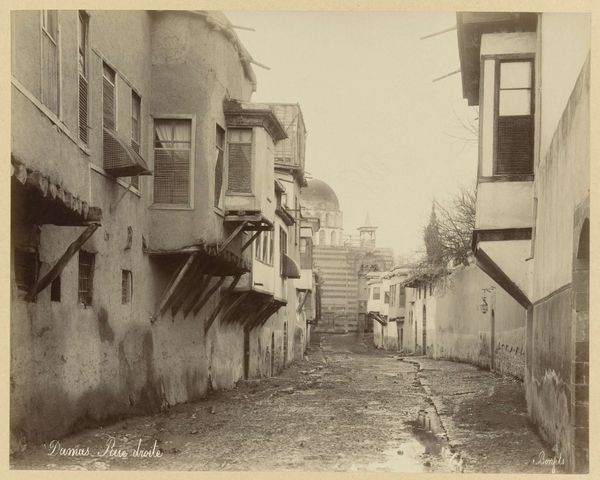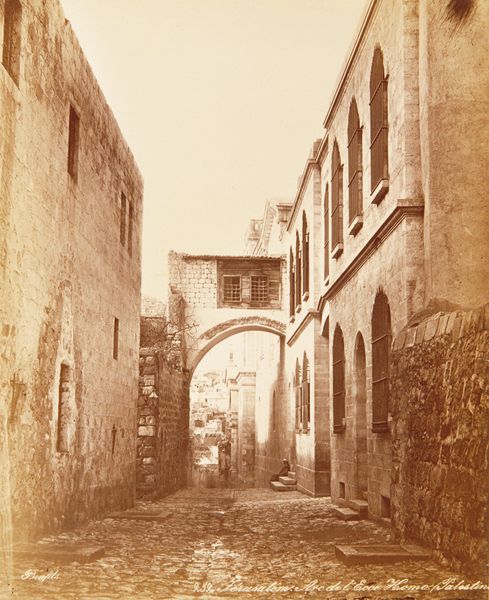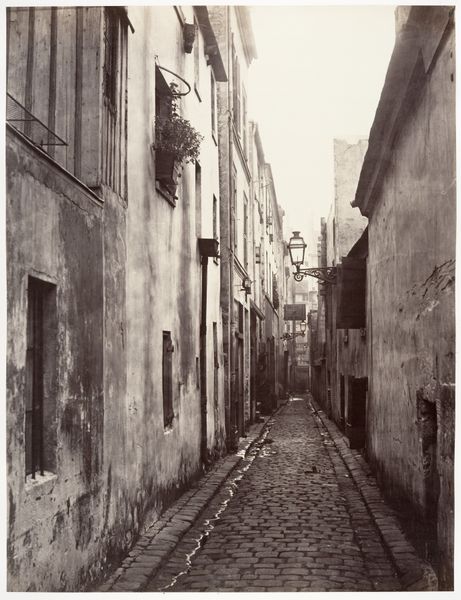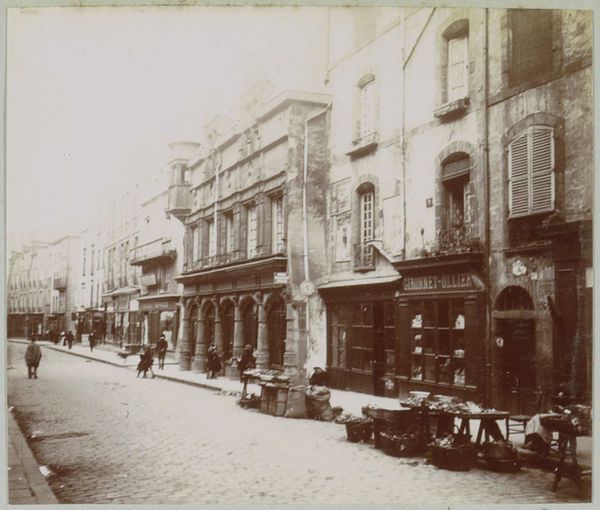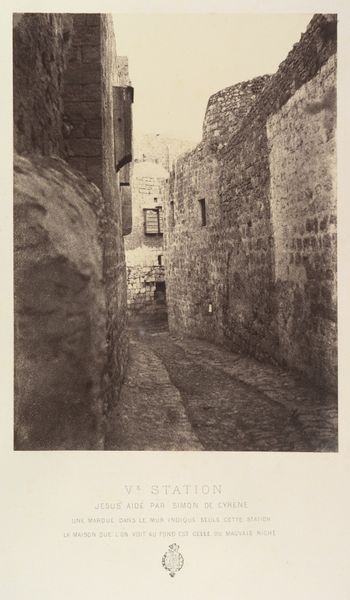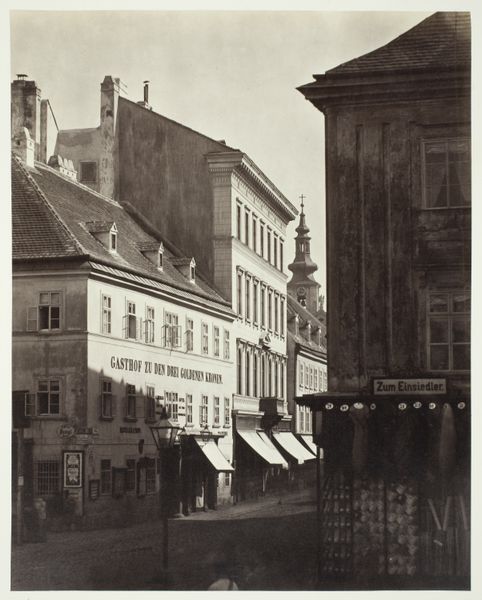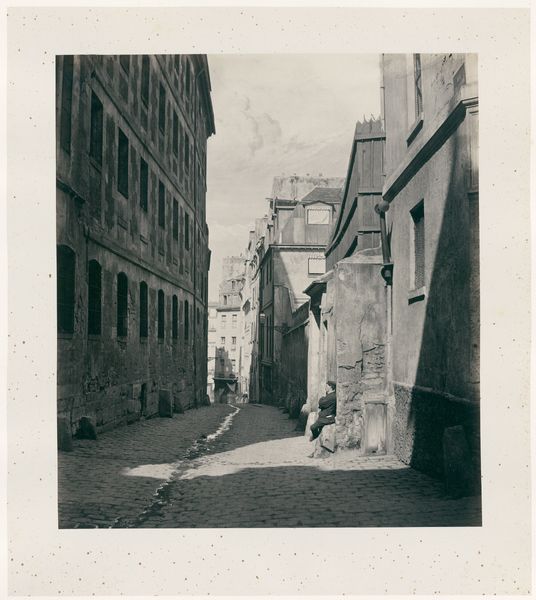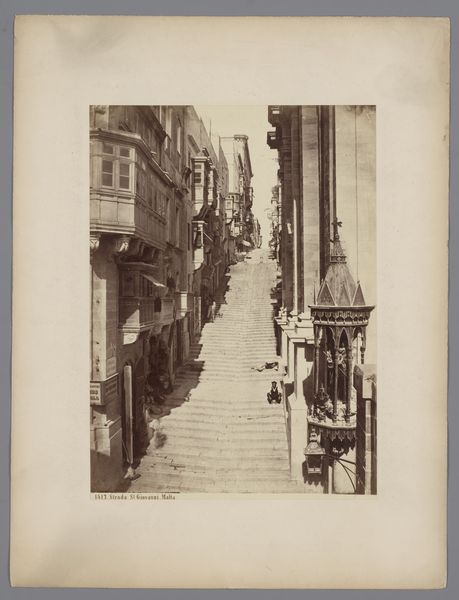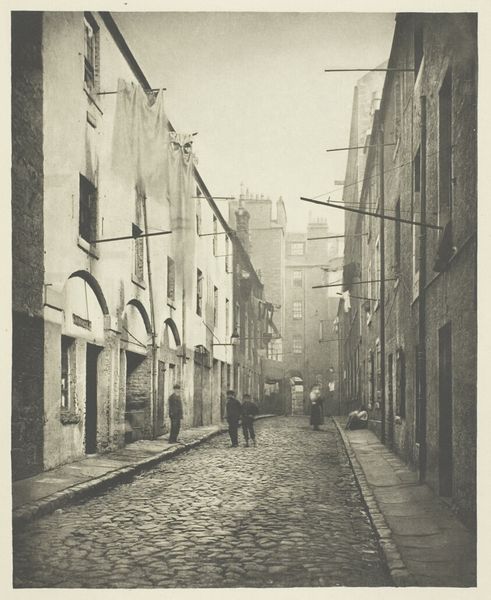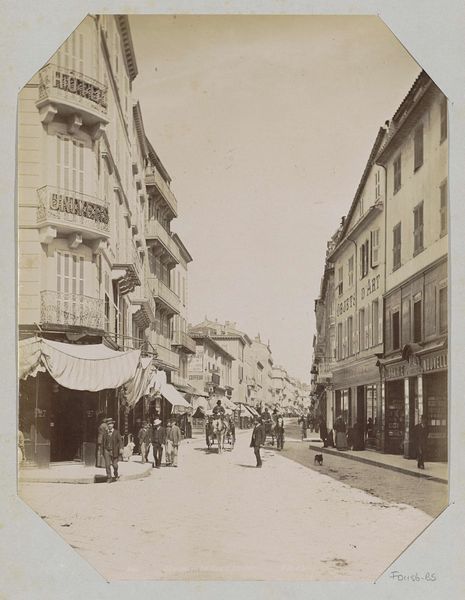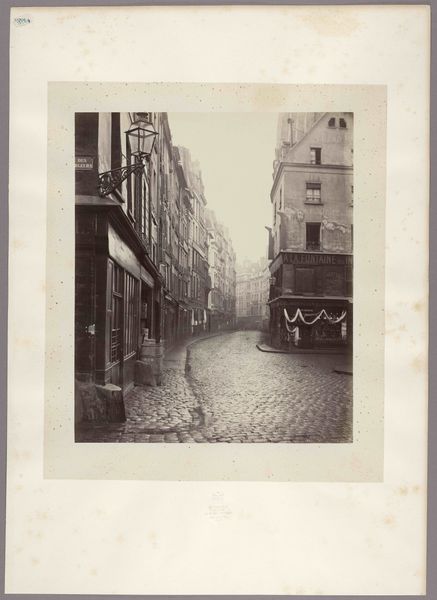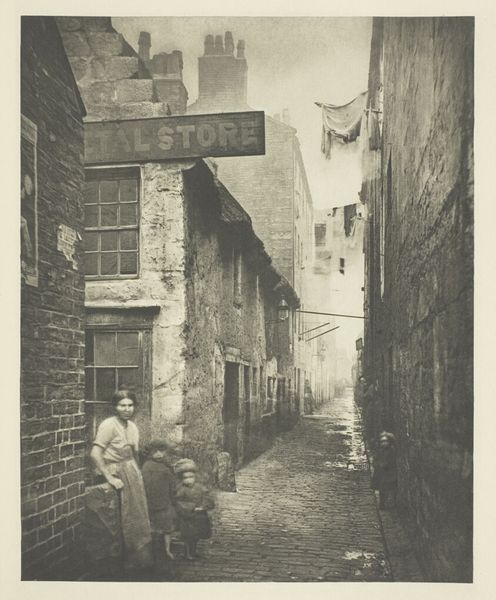
Market of the Patriarchs (Marché des Patriarches) c. 1862
0:00
0:00
Dimensions: 33.9 × 26.8 cm (image/paper); 56.6 × 39.9 cm (mount)
Copyright: Public Domain
Curator: Here we have Charles Marville's "Market of the Patriarchs," a silver print taken around 1862. The image currently resides at The Art Institute of Chicago. Editor: What strikes me immediately is the oppressive, almost claustrophobic, feeling despite being an outdoor scene. The high contrast creates very dark corners, boxed in by those towering buildings. Curator: Indeed. Marville was commissioned to document the areas of Paris slated for demolition during Haussmann's renovation of the city. His task was essentially capturing what was soon to be lost forever. The materials here tell us of photography’s documentary power in the 19th century, the silver preserving a reality soon erased for progress. Editor: That contextual layer certainly deepens the impact. Looking closer at the composition, note how the receding cobblestone street pulls the viewer's eye into the heart of the photograph, almost as though one were walking that very street. The arrangement leads us right to the distant carriage. The buildings feel as though they are leaning inward towards each other, a clear mastery of perspective. Curator: Considering its social context, the street itself becomes the protagonist. These paving stones bear witness to everyday transactions, the countless footsteps, and the physical labor of its residents. Notice the man standing by the ladder, perhaps a merchant, caught in this transient space that modernization would soon disrupt. Editor: Speaking of the human form, did Marville subtly place the figure off-center, drawing the viewers gaze not towards the conventional compositional apex of the market's central figures? I do find it an intriguing choice which highlights an unconventional subject. Curator: That figure also presents evidence of clothing and the state of daily working conditions in that moment. The photograph as historical evidence seems important to highlight in our interpretation. The man and his place here show something beyond mere physical landscape. Editor: Certainly. Overall, the print creates an immersive scene. It highlights how photography—and here, Marville’s keen artistic perspective—is about far more than just documentation, capturing an essence. Curator: Yes, through his detailed, careful accounting of what exists, he unintentionally reveals much more, making this a powerful statement on social conditions. Editor: Exactly. Well, that's certainly given me food for thought regarding its artistry and impact!
Comments
No comments
Be the first to comment and join the conversation on the ultimate creative platform.
